Abstract
Aldicarb, the active ingredient in the insecticide TEMIK, was introduced to the agricultural community over 25 years ago. It has been registered worldwide to control a wide variety of insect, mite, and nematode pests in agriculture. The toxicological research database supporting the registration and use of aldicarb was generated over more than 25 years and contains more than 280 animal studies on 12 species of animals, 2 clinical human trials, and over 20 human monitoring studies. This database, which includes biochemical aspects (metabolism and mode-of-action studies), acute toxicity and special short-term toxicity studies, long-term toxicity studies, and epidemiological observations in humans, serves as the starting point for the evaluation of the risks associated with the acceptance of levels of aldicarb residues in food and drinking water and for the more direct occupational exposure. This article highlights the available toxicological data and reviews worldwide regulation of aldicarb. Included in these discussions is a brief description of the toxicological end point upon which regulatory decisions have been based, namely acetylcholinesterase depression. Aldicarb, the N-methylcarbamic acid ester of 2-methyl-2-(methylthio) propionaldehyde oxime, was the first of a limited group of insecticidal oxime N-methylcarbamates that have properties distinct from N-methylcarbamates which have a phenolic constituent, instead of the oxime moiety. Aldicarb is highly water-soluble (approximately 6000 ppm), nonvolatile, relatively stable under acidic conditions, and is easily degraded under alkaline conditions. These properties are important determinants of its systemic action in plants and of its problematic environmental behavior. Possible environmental hazards involving the chemical include groundwater contamination and (more recently) excessive terminal residues in certain foods.
Full text
PDF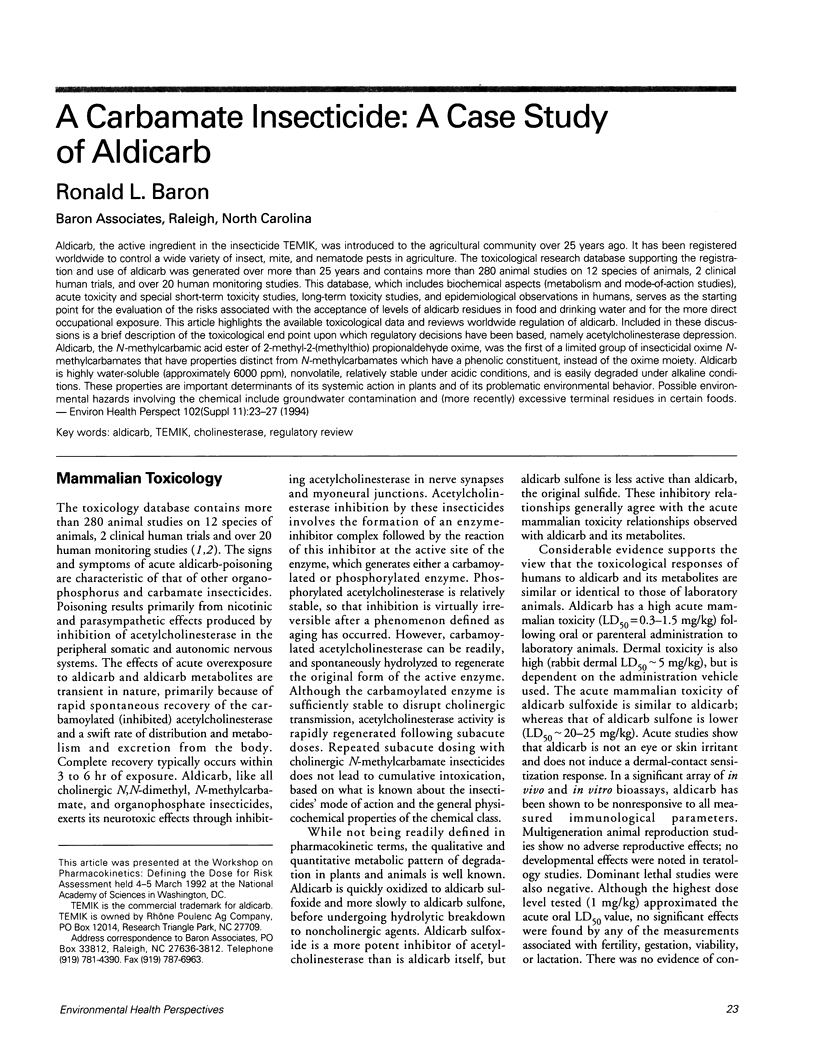
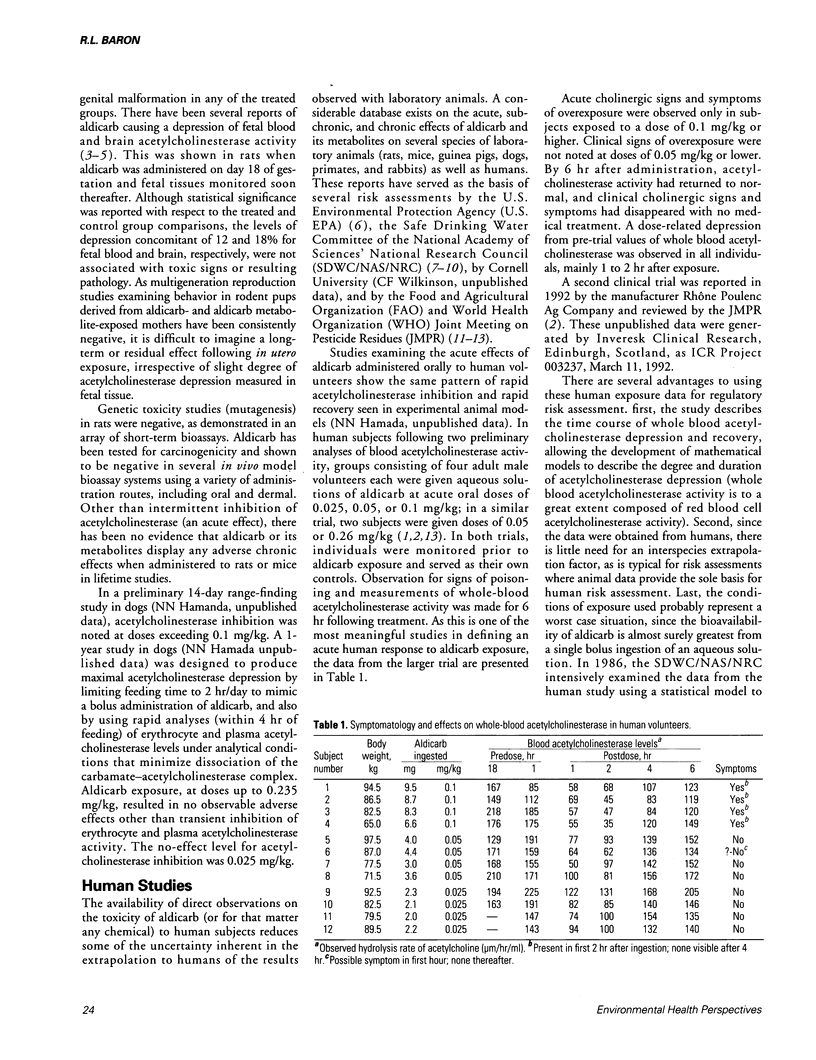
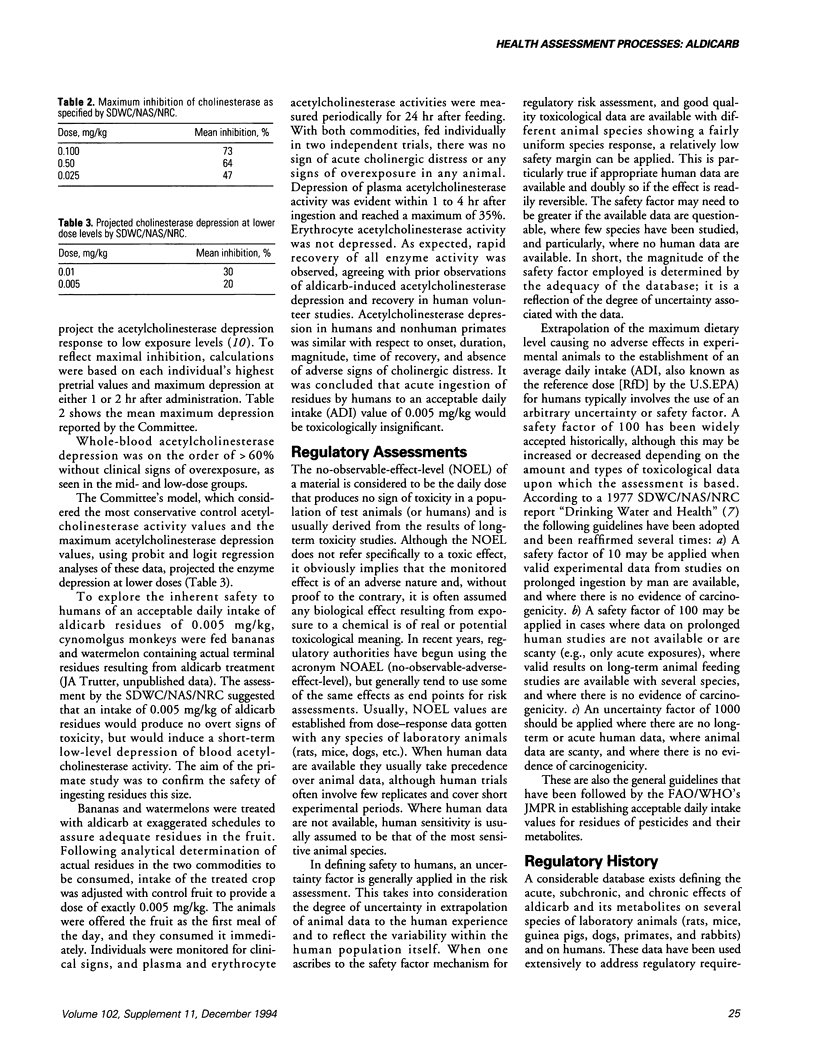
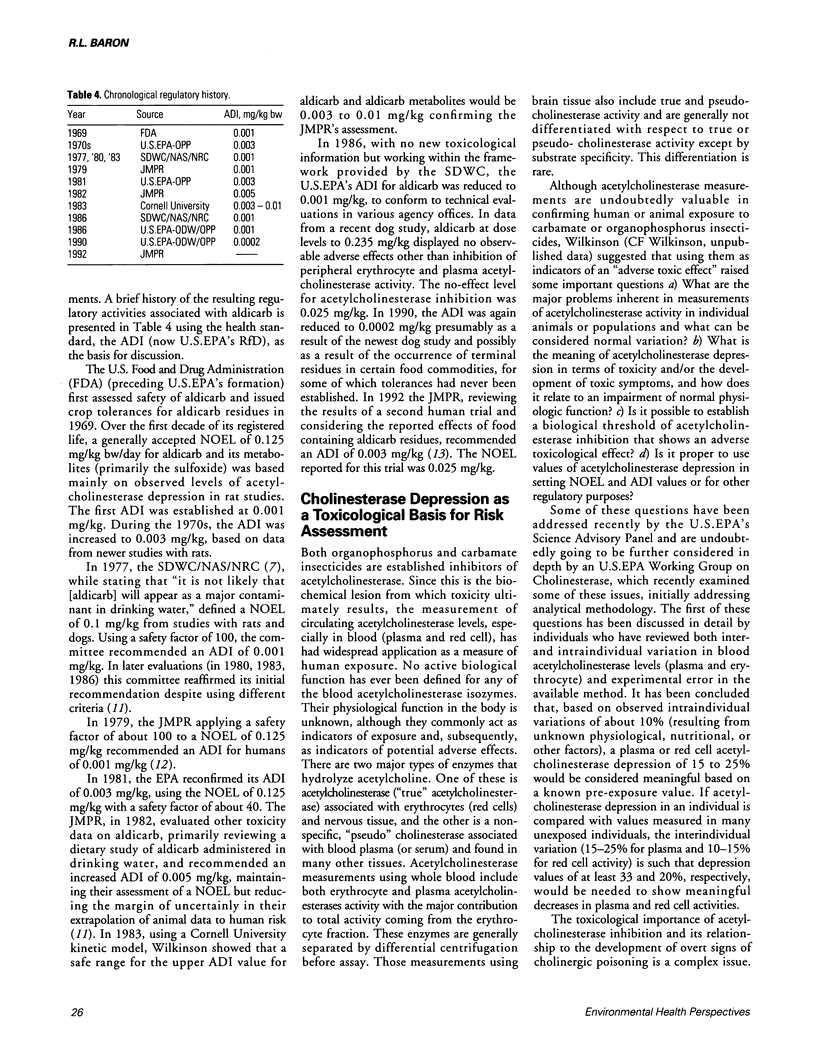
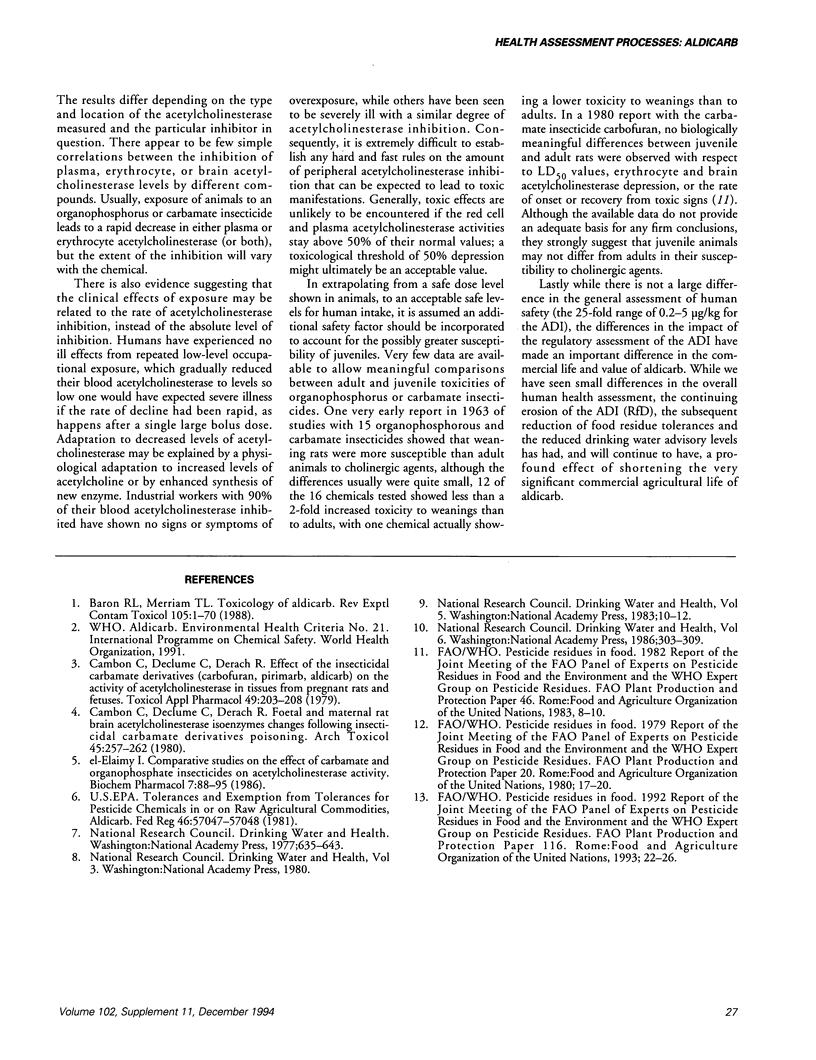
Selected References
These references are in PubMed. This may not be the complete list of references from this article.
- Baron R. L., Merriam T. L. Toxicology of aldicarb. Rev Environ Contam Toxicol. 1988;105:1–70. doi: 10.1007/978-1-4612-3876-8_1. [DOI] [PubMed] [Google Scholar]
- Cambon C., Declume C., Derache R. Effect of the insecticidal carbamate derivatives (carbofuran, pirimicarb, aldicarb) on the activity of acetylcholinesterase in tissues from pregnant rats and fetuses. Toxicol Appl Pharmacol. 1979 Jun 30;49(2):203–208. doi: 10.1016/0041-008x(79)90242-4. [DOI] [PubMed] [Google Scholar]
- Cambon C., Declume C., Derache R. Foetal and maternal rat brain acetylcholinesterase: isoenzymes changes following insecticidal carbamate derivatives poisoning. Arch Toxicol. 1980 Oct;45(4):257–262. doi: 10.1007/BF00293806. [DOI] [PubMed] [Google Scholar]


